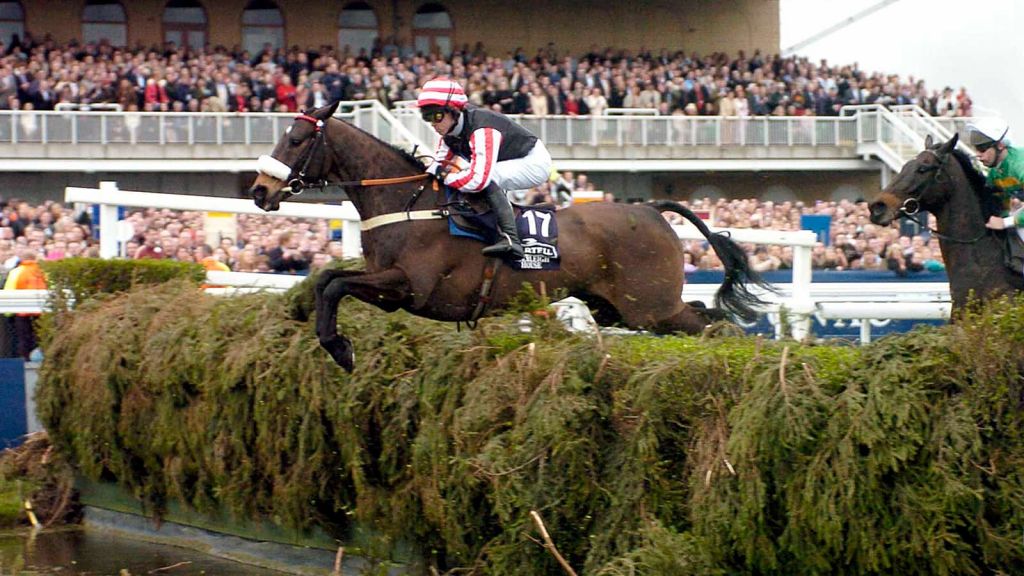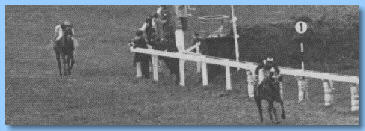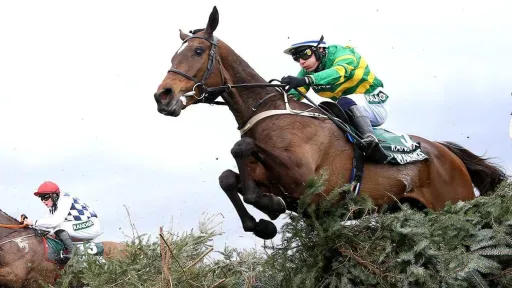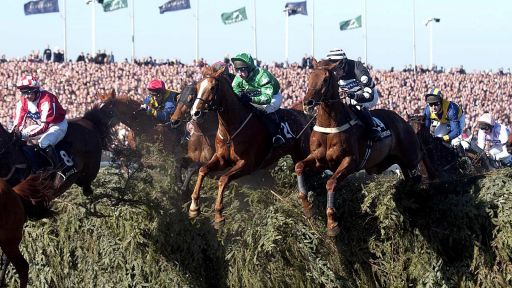Foinavon

One of the fences in the Grand National is called The Foinavon Fence. This fence is named after the 1967 Winner. The remarkable thing about this winner is not that he came in at the huge grand national odds of 100/1, but that he was a relative no-hoper who was far enough behind to miss the carnage at the fence which now bears his name.

Foinavon started his life belonging to Anne, Duchess of Westminster and he was named after a Scottish mountain, as was another of her horses the great Arkle . After racing in Ireland early in his career he was sold because his jumping was so poor! Even so he had won three chases previously, however, he did have a tendency to fall.
He was sent to John Kempton's yard, and John decided to send the horse hunting to improve his confidence, he also put him over small training fences every day.
This so called no-hoper had taken part in some top class races before attempting the national, he had finished fourth in a King George and took part in a Gold Cup at Cheltenham, given these facts it would seem that his odds of 100/1 may have been a bit generous unless of course, you consider the S.P. on the Tote of 444/1.
On the day of the race his trainer, who also was a jockey could not make the 10st weight that the horse was due to carry, so he went to Worcester to ride another horse that day, so the replacement Jockey was John Buckingham.
Going around on the first circuit nothing seemed remarkable about the race and the horses still in the race were going as well as could be expected, even at Bechers on the second circuit all horses seemed to get over the fence alright but no one could have guessed what was in store at the next fence which was one of the smallest fences the jockeys and horses had to jump that day. There were a few riderless horses at the front of the leading pack and when they got to the fence, they decided not to jump the fence but as often happens, they decide to run along the width of the fence.
Other horses which came up behind decided that there must have been something frightening at the fence because the leaders also began to refuse. The following horses then started to slow down as they were not going fast enough to jump the fence and either fell or quickly stopped, only to throw their jockey's over the fence, this resulted in horses starting to run back up the course where they came from.
There was utter chaos with both horses and riders alike falling or being thrown to the ground, this can been seen here with jockey P.Buckley trying to get his mount Limeking ( Number 9 ) to his feet, it looked like the race was over for everyone, however Foinavon's jockey who was at the back of the field saw all this carnage in front of him guided his mount around the mêlée and fortunately the horse was quick thinking enough to glide to the outside of the fence, and although going considerably slower than racing speed the horse managed to jump the fence successfully and both man and horse were off to complete the course.
John said later that at the time he did not realize that they were the only pair to jump the fence at the first attempt but he just kept going. Although some 17 horses remounted and finished the race the distance Foinavon had ' stolen ' at the fence meant that he lead over the final seven fences to go on to collect his prize.
Foinavon did run in the following years Grand National but fell or was brought down at the water jump.


